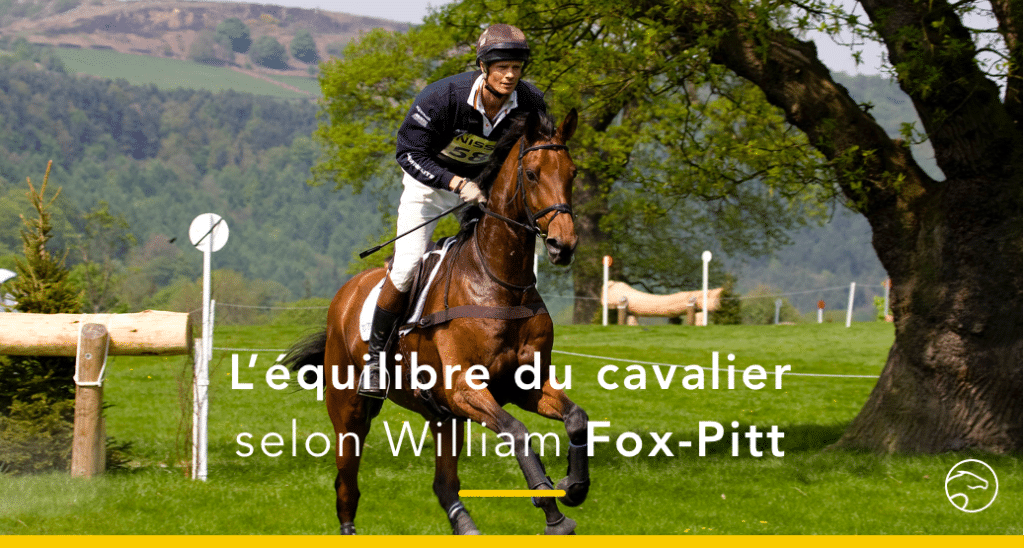How to jump safely ?
The horse has a natural balance that can be more or less disturbed when the rider first sits on him. This shows that horses are influenced by the weight of their riders. Since there are different disciplines, we have different positions to maintain balance. Jockeys are in search of speed, so they lean forward – in a horizontal balance. Dressage riders sit very straight and very upright to collect the horse. When jumping, we need to be centred “over our feet” to be lighter on the horse, but not too horizontal – unlike in racing.
Finding the ‘right position’ consists in not hindering the horse’s motion and being as close as possible to his centre of gravity, in order to be able to influence this balance as accurately as possible. The centre of gravity being located near the withers, this is why the saddle is placed forward near the withers. What you should do is keep your shoulders, hips and heels aligned. That is to say, you must be able to draw a straight line going from your shoulders, to your hips and down to your heels. That way, you’ll always be balanced over your feet no matter what position you choose!
To warm-up your horse, you can choose the half-seat: you put all the weight down into your heels and only touch the saddle slightly from time to time by following the rhythm of the horse’s canter and the rolling motion of the withers with your seat. It’s good to begin with for him to warm-up and stretch. Then, to continue your warm-up in the rising trot, remember to hold your upper body a little bit more upright.
What are the different positions when jumping ?
There are several positions that you can use throughout a jumping course.
First of all, there is the two-point position, in which you are balanced entirely over your feet. There are two points of contact, which are the legs, but you don’t touch the saddle with your seat. There’s no seat contact, and you have to be light over your horse. We usually use it in curved lines, to speed up the canter or gallop, and to relieve the back of the horse.
Then, in the approach phase of a fence, there are two positions, depending on the type of rider. It depends on each person’s balance.
The first one is the half-seat, with all the weight down into the stirrups and very slight contact with your seat bones in the saddle. In this balance, the horse doesn’t feel it but it allows you to sit a little closer and have him sit a little more on his hind quarters.
The second one is the full seat, when you sit completely in the saddle: you have weight in your seat and not just in the stirrups.
What are the mistakes to avoid?
When you rise out of the saddle, there are mistakes that happen very easily. The main ones are leaning too far backwards or forwards.
The first one happens when you want to be careful not to lean forwards. You move the leg a little forward, and then, logically, the pelvis tilts backwards. You then sit heavily on the horse, backwards, and far from the centre of gravity of the horse. This position interferes with the horse’s motion and blocks his back with our weight.
The second one happens when your legs tend to slip backwards. It’s usually unintentional. The knees are bent in front of the centre of gravity again. In this case, you mustn’t hold onto the reins if you lose your balance or fall back into the saddle when attempting to correct your balance.
My personal tip for the cross-country phase: This phase is a little different from show jumping, since the pace is much quicker. We really go faster in the cross-country pace, so it’s requires a different balance. I’ve got a little trick to avoid getting too tired in the cross-country phase, which is often very long. A show jumping course lasts from 1 to 1 minute 30 sec. When a cross-country course lasts at least 6 to 11 minutes.
So, I position my feet deeper in my stirrups. That way, the foot is straighter, the heel isn’t as low as in show jumping, which helps relieve the back of the calf. It’s a personal trick, and other riders don’t necessarily do it. But I feel very comfortable like this and I gain in stamina. Try it in your next cross-country! 😊
What did you think of this email ? Answer me with a comment here. See you soon !

